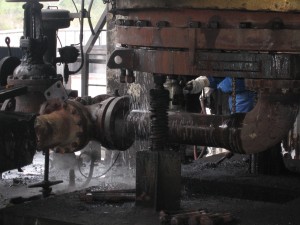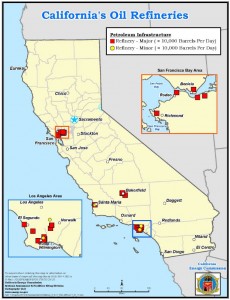by Evan Hyde, Director of Field Services, Coking.com Inc.
The chips are starting to fall from the rash of incidents in California refineries over the past few years. Most notable was the leak that occurred at the Chevron Richmond refinery on the crude unit that injured several workers and exposed the surroundings to “noxious fumes.” Local regulatory agencies and CalOSHA brought the hammer down on this plant and treated it like a crime scene. We can expect more of this in the future. If we look north to CNRL and how the investigation of their incident opening the top slide valve was handled, no one was allowed into the unit for days or even weeks. The collateral damage from the CNRL incident was just as bad if not worse than the actual fire damage. To my knowledge, no one has gone to jail yet for any of these incidents but I would not put it out of the realm of possibility. Therefore, prevention is paramount.
Yes, we all say safety is first and have the work practices on paper to back that up. After years of safety seminars and site audits at 40+ cokers around the world, Coking.com can confidently say we can all do better. Those among our community who have participated in our coker training (more the 1200+ people to date) know that we stress ownership of safety and accountability for everyone involved in the unit. These are not abstract concepts but examples rooted in nearly every coker we visit. There are a number of obvious issues in the photo below. How many can you spot?
One of the key aspects of the recent CalOSHA report is the focus on a safer systems approach, not just adding additional layers of protection or equipment. Making the right decisions at all levels of the organization will result in safer plants. CalOSHA and the CSB routinely site human factors as a primary cause of incidents. Lack of training, fatigue, or minimal experience are often listed among the causal factors for major incident investigations. Some of our worst incidents in delayed coking have been related to these factors.
Coker People:
- What is the purpose of the tension interlock on the winch and how does that effect my safety when drilling the drum?
- Why should I bother to put the chains through the online drum switch valves?
- What circuits in your unit are made of alloy piping and why?
We all should know the answers to these questions, right? You would be surprised how many people we run across who do not.
In a nutshell, what are CalOSHA recommending?
- Implement inherently safer systems to the greatest extent feasible
- Perform periodic safety culture assessments
- Adequately incorporate damage mechanism hazard reviews into process hazard analyses
- Complete root cause analyses after significant accidents or releases
- Explicitly account for human factors and organizational changes
- Use structured methods such as layer of protection analysis to ensure adequate safeguards in process hazard analysis
List and refinery map taken from http://www.calepa.ca.gov/Publications/Reports/2014/RefineryRpt.pdf
We, at Coking.com, are taking this safety bulletin from CalOSHA as a call to action. Not only for the cokers in California or USA or North America, but worldwide. We have so many lesson learned as an industry to share and improve upon. Safety is reliability and reliability is profitability. Therefore, it is in everyone’s best interest to learn, share, and get better.









Leave a Reply
You must be logged in to post a comment.